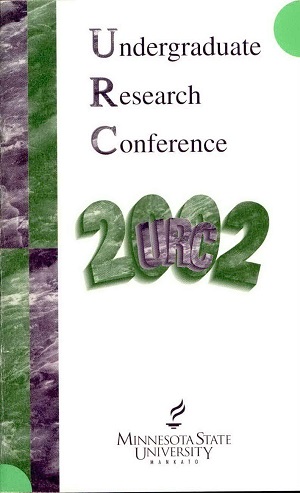Application of the Polymerase Chain Reaction (PCR) to Detect the Presence of Phenol Hydroxylase (LMPH) Genes
Location
CSU
Student's Major
Chemistry and Geology
Student's College
Science, Engineering and Technology
Mentor's Name
Elaine O. Hardwick
Mentor's Department
Biological Sciences
Mentor's College
Science, Engineering and Technology
Description
Phenol, an organic hydrocarbon consisting of a benzene ring with one hydroxyl group, forms the basic structure of many naturally occurring complex carbon compounds, e.g., humic acids and petroleum products, and is also commonly used as an organic solvent in industry. Environmental bacteria may encounter natural phenol-containing compounds, especially in eutrophic systems. Isolation and culture of these bacteria may be useful in finding organisms that may be useful for bioremediation of anthropogenic phenol pollution. The multicomponent phenol hydroxylase gene, called LmPH, has often been found in naturally occurring bacteria that have been identified as phenol-degraders. One approach that we are currently employing to identify and isolate indigenous phenol-degrading bacteria is a phenol enrichment culture. Sediments were removed from a natural eutrophic habitat (Ox Bow Lake, Mankato, MN), placed into microcosms and amended with phenol. Samples from the microcosms are plated onto medium containing phenol as the sole source of carbon and energy. Bacterial growth on these plates implies that the bacteria possess genes that enable degradation of phenol. To determine if phenol LmPH genes are present in these isolates, extraction and detection of total bacterial DNA followed by PCR amplification of LmPH genes using known primers (for LmPH) will be discussed.
Application of the Polymerase Chain Reaction (PCR) to Detect the Presence of Phenol Hydroxylase (LMPH) Genes
CSU
Phenol, an organic hydrocarbon consisting of a benzene ring with one hydroxyl group, forms the basic structure of many naturally occurring complex carbon compounds, e.g., humic acids and petroleum products, and is also commonly used as an organic solvent in industry. Environmental bacteria may encounter natural phenol-containing compounds, especially in eutrophic systems. Isolation and culture of these bacteria may be useful in finding organisms that may be useful for bioremediation of anthropogenic phenol pollution. The multicomponent phenol hydroxylase gene, called LmPH, has often been found in naturally occurring bacteria that have been identified as phenol-degraders. One approach that we are currently employing to identify and isolate indigenous phenol-degrading bacteria is a phenol enrichment culture. Sediments were removed from a natural eutrophic habitat (Ox Bow Lake, Mankato, MN), placed into microcosms and amended with phenol. Samples from the microcosms are plated onto medium containing phenol as the sole source of carbon and energy. Bacterial growth on these plates implies that the bacteria possess genes that enable degradation of phenol. To determine if phenol LmPH genes are present in these isolates, extraction and detection of total bacterial DNA followed by PCR amplification of LmPH genes using known primers (for LmPH) will be discussed.



